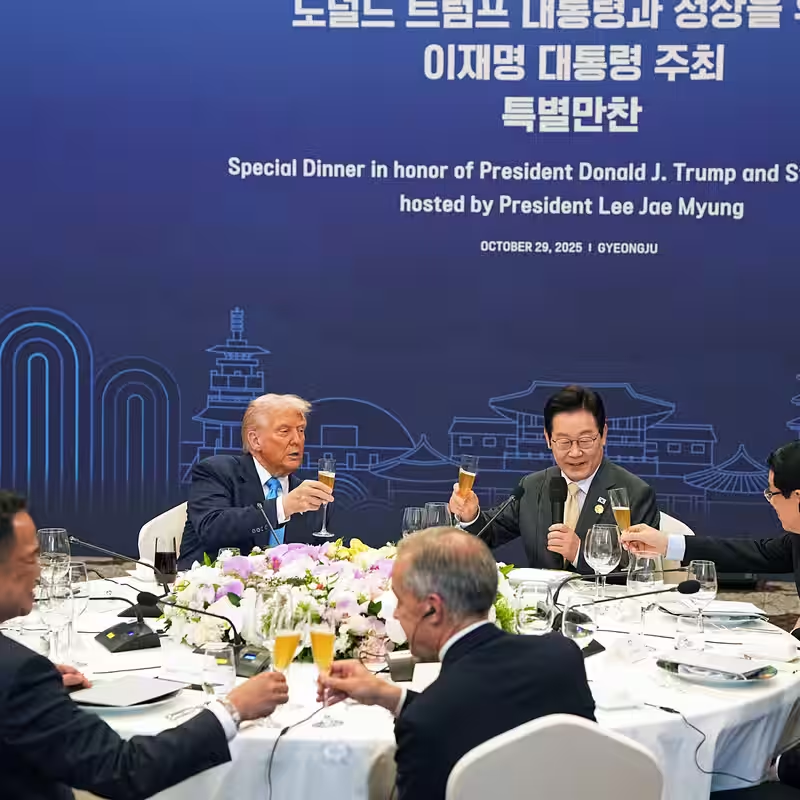Table of Contents
- Breakthrough Deal After Months of Tension
- What’s in the $350 Billion Commitment?
- Tariff Relief and Trade Concessions
- Boeing Orders and U.S. Shipbuilding Boost
- Geopolitical Implications Ahead of Xi Meeting
- Sources
Breakthrough Deal After Months of Tension
In a dramatic turnaround during President Donald Trump’s Asia tour, the United States and South Korea have finalized a landmark trade agreement that includes a reduction in U.S. tariffs to 15% and a massive South Korean investment pledge totaling $350 billion.
The announcement came Wednesday evening in Gyeongju, South Korea, following high-stakes talks between President Trump and South Korean President Lee Jae Myung on the sidelines of the Asia-Pacific Economic Cooperation (APEC) summit.
“The prospects for an agreement were not bright,” admitted Kim Yong-beom, President Lee’s chief of staff, “but the two sides made rapid progress today.”
What’s in the $350 Billion Commitment?
Under the new framework, Seoul will commit:
- $200 billion in broad U.S. investments—roughly $20 billion per year over a decade
- An additional $150 billion earmarked specifically for American shipbuilding operations
This fulfills, albeit in modified form, Trump’s earlier demand that South Korea invest $350 billion in the U.S. economy—a figure that had stalled negotiations for months.
Tariff Relief and Trade Concessions
Crucially for Seoul, the U.S. has agreed to lower existing tariffs—reportedly to a uniform 15% across key sectors—easing a major pain point for Korean exporters. While the White House has not yet published full tariff schedules, South Korean officials confirmed the rate as part of the finalized terms.
The deal also relaxes stringent investment conditions previously imposed by Washington, giving Korean firms greater flexibility in how and where they deploy capital in the United States.
Boeing Orders and U.S. Shipbuilding Boost
As a tangible sign of goodwill, Korean Air has agreed to purchase 103 Boeing aircraft, a move expected to support thousands of American manufacturing jobs.
Meanwhile, the $150 billion shipbuilding investment is seen as a strategic play to revitalize U.S. maritime infrastructure—a sector long flagged by the Trump administration as critical to national security and economic resilience.
Geopolitical Implications Ahead of Xi Meeting
The timing of the deal is no coincidence. With President Trump scheduled to meet Chinese leader Xi Jinping on Thursday—the final stop of his Asia trip—the U.S.-South Korea accord sends a clear message: Washington is deepening alliances in the Indo-Pacific while pressuring Beijing on trade.
Analysts suggest the agreement could serve as a template for future negotiations with other Asian economies, particularly Japan and Vietnam, where similar tariff and investment disputes linger.
Sources
The New York Times – South Korea Says U.S. Agreed to Lower Tariffs and to Ease Investment Terms




